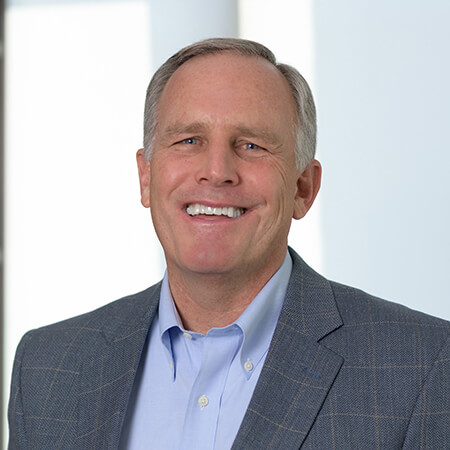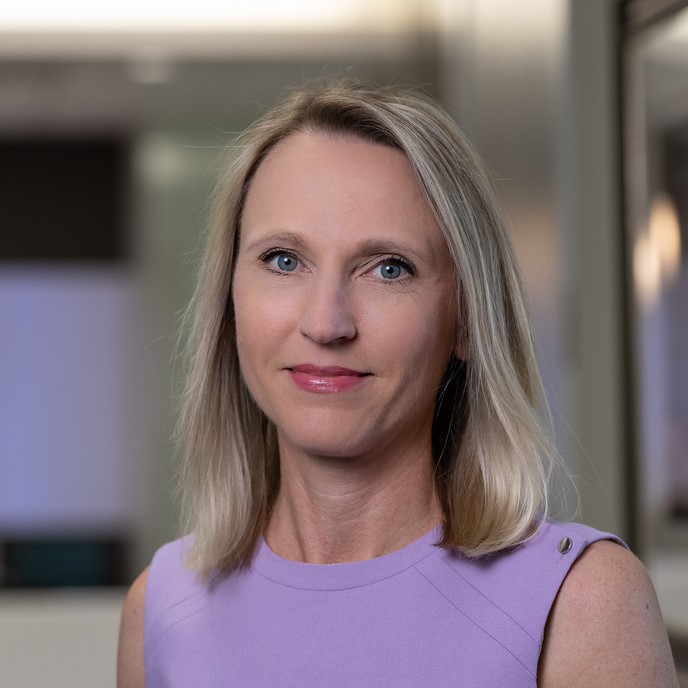Many successful small and mid-sized companies are increasingly opting to remain private, driven by a combination of strategic, financial, and operational factors. Founders often prefer

The Changing Landscape of Homeowner’s Insurance in CA Due to Fire Risk
May 24, 2021
Sand Hill’s Senior Wealth Manager Steve Peterson and Senior Managing Director at the specialty brokerage firm Risk Strategies, John O’Neill, discuss the the changing landscape of homeowner’s insurance in California due to fire risk.
The devastating wildfires that have hit California in recent years have had a direct impact on both the pricing and availability of homeowner’s insurance coverage across the State. And this is happening in many different places, especially here in Northern California, where our offices are located and where many of our clients live.
It’s affecting our clients as homeowner’s with both their primary residences in suburban locations, like the Hills of Woodside here in Silicon Valley or the narrow cul-de-sacs of Mill Valley and Marin County, and possibly with vacation homes too, in popular places like the Napa Valley, Sonoma, Lake Tahoe, and elsewhere. We will briefly examine the trends in the property insurance industry, from the exponential rise in the total costs nationally of homeowner’s claims to the resulting outcome of increasing numbers of non-renewals.
TRANSCRIPTION:
Steve Peterson:
I’m Steve Peterson. I’m a Senior Wealth Manager here at Sand Hill Global Advisors, and I’m here to discuss the changing landscape of homeowner’s insurance in California due to fire risk. And I’m joined in that conversation with John O’Neill, a Senior Managing Director at Risk Strategies, a top national specialty broker providing risk management advisory services, with more than 25 specialty practices and over a hundred offices across North America. John has been in the insurance industry for over 30 years, helping wealthy high net worth individuals and their families as well as privately held companies. And he specializes in wineries, a question in agricultural businesses, and real estate. The recent devastating wildfires that have hit California in recent years have had a direct impact on both the pricing and availability of homeowner’s insurance coverage across the State. And this is happening in many different places, especially here in Northern California, where our offices are located and where many of our clients live.
And it’s affecting our clients as homeowner’s with both their primary residences in suburban locations, like the Hills of Woodside here in Silicon Valley or the narrow cul-de-sacs of Mill Valley and Marin County, and possibly with vacation homes too, in popular places like the Napa Valley, Sonoma, Lake Tahoe, and elsewhere. We will briefly examine the trends in the property insurance industry, from the exponential rise in the total costs nationally of homeowner’s claims to the resulting outcome of increasing numbers of non-renewals. And we at Sand Hill take this topic very seriously in our role as trusted advisor and financial counselor. And we do this in addition to our own investment management piece because risk management and asset protection are key elements of long-term financial success.
Hello, John, welcome. Thank you for joining us. Would you like to paint the picture for us, the landscape painting, so to speak? How has the insurance industry changed over the last few decades?
John O’Neill:
Well, thanks for inviting me this morning, Steve, to participate in what I believe is a very important discussion. And it’s a challenging time to be in the insurance business, no doubt. Let me just give you some statistics that might help paint the picture for you. From 1964 through 1990, the insurance industry on average paid about $100 million a year for wildfire claims in the state of California. So over the next two decades, 1990 through 2010, then increased six fold. So they ended up paying about $600 million a year in insurance claims. But even more distressing, is that between 2011 and 2018, that went another six times increase or $4 billion a year. So you can see it’s very significant. And in 2018 through 2020, that again has doubled to about $9 billion a year. So it’s a very, very difficult time for insurance companies who are deploying capital and expect to make a return on that investment with these sorts of claims to be remaining profitable.
And so, as a result, the insurance companies do two things. They look to cull risks that they perceive to be higher threats of loss for wildfire, or they look to increase premiums. And that’s exactly what we’re seeing in the industry right now, it’s very challenging. And I’d also like to add to that, Steve, it’s not just the wildfires. It’s climate change in general. While we see catastrophic fires in the West, we also see severe weather across the rest of the United States. For example, the hurricanes now have gone through not only our alphabet, but the Greek alphabet in terms of naming of these, more than we’ve ever had on record. We are now experiencing tornadoes in the Southeastern part of the United States. So nationally, this is a problem and there’s really just no place to hide and there’s no opportunity to get relief or respite. So that’s what we’re seeing right now.
Steve Peterson:
I was going to say that yes, that makes it very difficult with the insurance company, having no respite anywhere and no relief. There are…just quickly though, for people who can still get homeowner’s insurance coverage, what are some of the important things to consider to make sure they have adequate coverage?
John O’Neill:
That’s a great question, Steve. I think three of the most important things are really making sure that you have extended replacement costs. An extended replacement cost is really, what is the cost to rebuild your house and whatever that policy limit is, let’s just say your house is a million dollar house, by having extended replacement costs, it would give you a percentage over that limit. And why that’s important is, when we have these catastrophic events, such as a wildfire that hits a geographic region very hard, what we’ve seen time and time again, is that it has a major impact on both labor and material costs. And so the supply chain gets impacted because everyone needs framing materials. So what happens is the cost of framing materials goes up considerably. Same thing with labor rates. When you have a small pool of general or subcontractors that are working in a particular area, their rates are going to rise too because it’s demand and supply, supply is limited. That’s the first thing.
Secondly, most importantly, make sure your homeowner’s policy includes building code upgrade. And what I mean by that is every month, the building codes of cities change. And so if your house was built 50 years ago or 25 years ago, or even just a few years ago, it’s likely that the building codes have changed over that time. For example, if you have a loss to your house now, you may have to replace that house with an internal fire sprinkler system. You’ll certainly have to replace them with higher insulation values, to comply with energy efficient laws that are going in place, and you don’t want to be caught short. And these things can be very costly. So make sure you have building code upgrade under your policy and get as much as they’ll sell you, because you’re going to need it, no matter what happens.
Steve Peterson:
And there are also terms that I’m familiar with: hardening your property and defensible space. Briefly, what does that involve?
John O’Neill:
Yeah, hardening your properties is a great concept. It’s making your house more fire resistant. For example, many homes today that are in vacation areas such as Napa or Sonoma or the Tahoe Basin are very much exposed to wildfire threat. So the things you can do to reduce that threat are adding things like ember-resistant venting. What we’ve learned from these wildfires is that fire embers can travel for miles, and it’s not unusual that they would land on a house and start a fire someplace else.
Also, defensible space is a great topic as well, Steve. It’s putting enough clearance between your house and the forest or wildfire zones, to give you a buffer zone where the fire can be remediated, reduced or eliminated. So that means removing combustible materials, such as tanbark that people put down or decking made of wood. You might want to consider replacing that with fire resistant materials. The roofing materials in these areas as well, are becoming like seamed metal sheet roofs, which are fire resistant as opposed to something like a wood shake roof. And it’s happening in well developed areas too, not just remote locations. So hardening the properties is really incredibly important as well as creating defensible space.
Steve Peterson:
But even if you do all these things, you could be in an area where you’re just not going to have your coverage renewed. Is that correct?
John O’Neill:
Unfortunately, it is, Steve. There’s two different issues going on here. Insurance companies can refuse to insure a house or they can decide not to renew it, even if they’re currently on it. It’s not unusual that insurance companies run what are known as wildfire scores and that’s the susceptibility to wildfire for your particular house or location. And it’s also happened in several cases where certain insurance companies looked at a zip code and said, “You know what? We just don’t want to be in the zip code anymore,” and non-renewed all of their policy holders within that zip code.
Steve Peterson:
So that’s separate than regulated…insurance companies are regulated, but they can still choose not to provide coverage.
John O’Neill:
That’s absolutely correct. An admitted insurance company is a regulated insurance company and the state insurance commissioner oversees the insurance and the rates that that company can charge. There are also options for non-admitted companies. And those are companies that, they’re financially very secure. However, they operate not within the department of insurance regulations. And so it gives that insurance company the ability to change their rates based on evolving market conditions. And so a non-admitted insurer, someone like a Lloyd’s of London, can file a rate today and use it tomorrow. Whereas an admitted insurance company has to go through a regulatory process that usually will take six to nine months to get a rate approval.
Steve Peterson:
So I think that leads to my next question, and perhaps most important question in the conversation is what does somebody do if they lose their homeowner’s insurance coverage? And I think that that’s leading to some of these non-admitted carriers you’re discussing and are there other options for folks? What are some of the things that people could do if they do not get their standard insurance renewed?
John O’Neill:
Yeah, and that is happening more and more, Steve, so it’s quite likely that many of your clients will experience that scenario. So the options are as follows: one is you can continue to shop for other insurance companies. And if you’re not successful in finding an admitted company, there are other options such as Lloyd’s of London, which is basically a syndicate or a number of syndicates that could take a portion of that risk. And they do that at a much higher price point. So expect that you’ll be paying a lot more than you did the prior year. There are other non-admitted or non-regulated insurance companies as well, that would consider writing that risk much like a standard homeowner’s policy, but would again, charge considerably more. And the last resort is the California FAIR plan. And the California FAIR plan is an association that’s based out of Los Angeles.
It really consists of all of the insurance companies that participate and write insurance in the state of California. And each of those insurance companies absorbs their percentage of the loss of the FAIR plan based on their writings in the state of California. Now the FAIR plan is a backstop and it’s required to really insure anyone who applies for coverage. The caveats are, though, they’re limited to not more than $3 million in replacement costs on any single home. And that might mean that the contents or what have you, you can’t go more than $3 million, so you’re very limited. And secondly, with the FAIR plan is that you are not going to get a standard policy. It’s only fire, smoke, vandalism, and malicious mischief. So if you have a water loss because of pipe breaks, that FAIR plan policy is not going to respond to that. Those are things that you would have to consider buying or purchasing an additional policy, known as a wrap policy, to give you those extra added perils and the coverage for them.
Steve Peterson:
And I imagine it also doesn’t include personal liability as well.
John O’Neill:
That’s correct. Normally you’ll have to extend personal liability from a primary home, or you’ll have to buy a separate policy to-
Steve Peterson:
And normally, if you were to get an umbrella policy in life for extra coverage of personal liability, you have to have some amount, part of your homeowner’s insurance. So if you’re left with just the California FAIR plan, you have to then get a wraparound insurance for personal liability for basic, and then you can consider umbrella insurance, correct?
John O’Neill:
That’s correct, yeah. All personal umbrellas have a requirement for an underlying limit of liability and you have to deal with it in that way.
Steve Peterson:
So going back just quickly to Lloyd’s of London and syndicates like that. It seems like there are enough insurance companies participating that they all take kind of a sliver of the risk, which enables them to take the risk so that no one catastrophe, destruction of homes, just wipes them out. Is that kind of a fair way to describe it?
John O’Neill:
Yeah, especially on higher valued residences where they have a much higher wildfire exposure they may want to take maybe only the first two or three million, and then they’ll have to have an additional carrier participate in the next two or three million. And with that you build layers and they spread the risk.
Steve Peterson:
And then with the Cal FAIR plan, it’s kind of a similar association, so to speak, within the state that insurance companies are providing, but it’s much more basic, more bare bones and still expensive, but it doesn’t get you anywhere close to what a Lloyd’s of London kind of policy would get, but it’s kind of, would you call it an insurance coverage of last resort?
John O’Neill:
I would. As a matter of fact, if you have any other valid quote from an insurance company, either admitted or non-admitted, you’re not allowed to use the FAIR plan at all.
Steve Peterson:
Got it. And I imagine that’s also been strained too in recent years. Because of all the-
John O’Neill:
Unfortunately it has, yeah. When I participated in a insurance commissioner call a couple of months ago, at the time they made the statistic that submissions were up something like 700% and the staff was having difficulty keeping up. So they’re making it even more difficult to find coverage. In fact, they’ve put a new regulation in place very recently that says that they will not insure any sort of agricultural building from a commercial standpoint. So they’re really trying to limit it just to homes or very simple structures.
Steve Peterson:
And then finally, self-insurance is something that is a possibility for some, maybe a small cabin up in the mountains, it’s not a primary residence, but then again, that’s not a topic for conversation today. And it’s also not something that most people can afford to consider. So that is something on the side, but that’s a separate matter. So is there anything else that we haven’t covered that you think is important to mention here in closing?
John O’Neill:
Well, it’s a new landscape for homeowner’s insurance in California these days, Steve, and I think the recent events, primarily the annual catastrophic wildfires have altered things significantly. So at a minimum in summarizing everything, I think folks need to consider hardening up their property. It’s just prudent thing to do, even if it’s not required. They can also make sure that any available standard coverage is adequate. Again, remember extended replacement cost and building code upgrade. And if it’s unfortunate and they do get a hit with a non-renewal notice or they’re denied coverage on a new purchase, there are options. And even if they’re more expensive, you need to really properly examine what you’re getting. It’s better to find out upfront what the exclusions in the policy are rather than at time of a claim. So those are things that I think every person should just consider going forward.
Steve Peterson:
Well, that’s a helpful summary and you’re right. It’s nice to know that there are at least some options available for homeowner’s throughout the state of California, despite the increasing number of risks. And as you say, it does take careful examination, and John and his team are very experienced at such examinations. And we have benefited today from a brief analysis by John on this subject. And we thank you very much, John, for joining us today and reviewing this subject with us. So thank you very much.
John O’Neill:
Thank you, Steve. I enjoyed participating.
Steve Peterson:
And finally, for more information on the services that Sand Hill Global Advisors provides, please visit our website. Thank you very much.
Articles and Commentary
Information provided in written articles are for informational purposes only and should not be considered investment advice. There is a risk of loss from investments in securities, including the risk of loss of principal. The information contained herein reflects Sand Hill Global Advisors' (“SHGA”) views as of the date of publication. Such views are subject to change at any time without notice due to changes in market or economic conditions and may not necessarily come to pass. SHGA does not provide tax or legal advice. To the extent that any material herein concerns tax or legal matters, such information is not intended to be solely relied upon nor used for the purpose of making tax and/or legal decisions without first seeking independent advice from a tax and/or legal professional. SHGA has obtained the information provided herein from various third party sources believed to be reliable but such information is not guaranteed. Certain links in this site connect to other websites maintained by third parties over whom SHGA has no control. SHGA makes no representations as to the accuracy or any other aspect of information contained in other Web Sites. Any forward looking statements or forecasts are based on assumptions and actual results are expected to vary from any such statements or forecasts. No reliance should be placed on any such statements or forecasts when making any investment decision. SHGA is not responsible for the consequences of any decisions or actions taken as a result of information provided in this presentation and does not warrant or guarantee the accuracy or completeness of this information. No part of this material may be (i) copied, photocopied, or duplicated in any form, by any means, or (ii) redistributed without the prior written consent of SHGA.
Video Presentations
All video presentations discuss certain investment products and/or securities and are being provided for informational purposes only, and should not be considered, and is not, investment, financial planning, tax or legal advice; nor is it a recommendation to buy or sell any securities. Investing in securities involves varying degrees of risk, and there can be no assurance that any specific investment will be profitable or suitable for a particular client’s financial situation or risk tolerance. Past performance is not a guarantee of future returns. Individual performance results will vary. The opinions expressed in the video reflect Sand Hill Global Advisor’s (“SHGA”) or Brenda Vingiello’s (as applicable) views as of the date of the video. Such views are subject to change at any point without notice. Any comments, opinions, or recommendations made by any host or other guest not affiliated with SHGA in this video do not necessarily reflect the views of SHGA, and non-SHGA persons appearing in this video do not fall under the supervisory purview of SHGA. You should not treat any opinion expressed by SHGA or Ms. Vingiello as a specific inducement to make a particular investment or follow a particular strategy, but only as an expression of general opinion. Nothing presented herein is or is intended to constitute investment advice, and no investment decision should be made based solely on any information provided on this video. There is a risk of loss from an investment in securities, including the risk of loss of principal. Neither SHGA nor Ms. Vingiello guarantees any specific outcome or profit. Any forward-looking statements or forecasts contained in the video are based on assumptions and actual results may vary from any such statements or forecasts. SHGA or one of its employees may have a position in the securities discussed and may purchase or sell such securities from time to time. Some of the information in this video has been obtained from third party sources. While SHGA believes such third-party information is reliable, SHGA does not guarantee its accuracy, timeliness or completeness. SHGA encourages you to consult with a professional financial advisor prior to making any investment decision.
Other Posts By This Author
- – Admitting that Non-Admitted Insurance Is Here to Stay
- – Exchange Ideas
- – College Bound — Hip, HIPAA, Hooray
- – Fiscal Sponsorship for Charity
Related Posts









